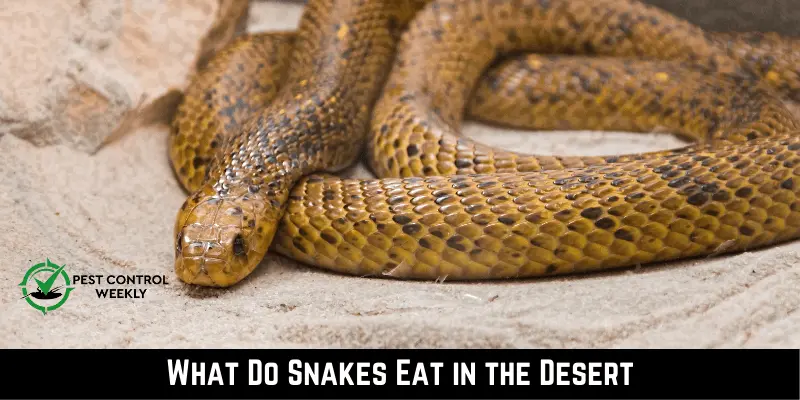The desert, frequently characterized by its stark beauty and harsh conditions, is home to a beguiling variety of serpent species that have mastered the art of survival. These incredible reptiles have various and fascinating diets based on their surroundings. Most people are curious about, what snakes eat in the desert.
Most snakes eat these animals in the desert:
- Rodents
- Birds
- Amphibians
- Lizards
- Other snakes
In this blog, we warmly invite you to explore desert snakes’ diets. You’ll be amazed by the wide range of food these hardy animals eat, from tiny insects to big mammals. This shows the complexity of life in the harsh but beautiful ecosystems of the desert.
What Do Snakes Eat In The Desert Commonly?
In the desert, a snake’s main food source is the small animals that live in the dunes. Desert snakes need their prey to be close by, smaller than them, and in large numbers. Some snakes mostly eat cold-blooded animals, while others almost only eat warm-blooded ones.
According to Integr Org Biol, the prey desert snakes feed on in the desert include:
Rodents
Some common rodents that live in the desert are mice, rats, and rabbits. In some deserts, you can even find wild gerbils and hamsters. All of these kinds and species are prey for snakes. Most of the time, a snake’s size determines the size of the animals it will hunt.
Rodents come in many shapes and sizes, live in many places, and are easy for snakes to catch as food because they are so common. Most rodents live in the desert and have babies in caves, so a snake doesn’t have to climb or work too hard to eat them.
Birds
Many species of snake are opportunistic feeders, meaning that they will hunt and consume whatever is easy to catch. This can sometimes involve bird eggs and small birds. In North America, snakes are often attracted to bird nests and birdhouses in the suburbs, which they can easily get to by climbing trees and posts.
Rat snakes are known for doing things like this. In deserts, many birds build their nests in holes in the ground or among low-growing plants. This is a well-known trait of the small burrowing owl, which lives in deserts in the United States and Mexico. The nesting behaviors of desert birds make it incredibly simple for snakes to hunt and consume them from the ground.
Amphibians
It may seem strange to think that a frog, salamander, or toad could live in a desert. Snakes need animals that can live on both land and water to eat. This is true even in deserts. Male snakes’ mating calls provide a convenient feeding opportunity for these snakes. With their calls, the male frogs will not only attract female frogs, but they could also make themselves easy targets for nearby predators.
The number of wild frogs has been going down recently, which is bad because snakes mostly hunt and eat frogs. The desert night snake is known for eating frogs and salamanders. It lives in the western United States, southern British Columbia, and Mexico.
Lizards
Deserts are home to many different kinds of lizards. A few examples are the desert horned lizard, the Gila monster, the Chuckwalla, the collared lizard, and the armadillo girdled lizard.
Lizards live in burrows in deserts, just like frogs and birds do. This makes it easy for snakes to get to them and their homes. The orange-naped snake, which is also called the moon snake, hunts lizards and skinks that live in the deserts of Australia. They have poison, but most people don’t think they are dangerous to humans.
Smaller Snakes
Ophiophagy is the practice of eating snakes. Many snakes hunt and eat other snakes, which is called ophiophagy. This is a well-known trait of kingsnakes, and many subspecies live in the deserts of the Americas. As was said above, the desert kingsnake eats birds and smaller rattlesnakes.
When a snake eats other snakes, it usually doesn’t get sick from its poison. If you want to learn more about snakes, we have an exciting post about what kinds of snakes eat other snakes.
What Kind Of Snakes Are Found In The Desert?
Deserts are known for their harsh conditions and unique wildlife. According to ACS Omega. among these fascinating creatures are various types of snakes that have adapted to the challenging environment.
Rattlesnake
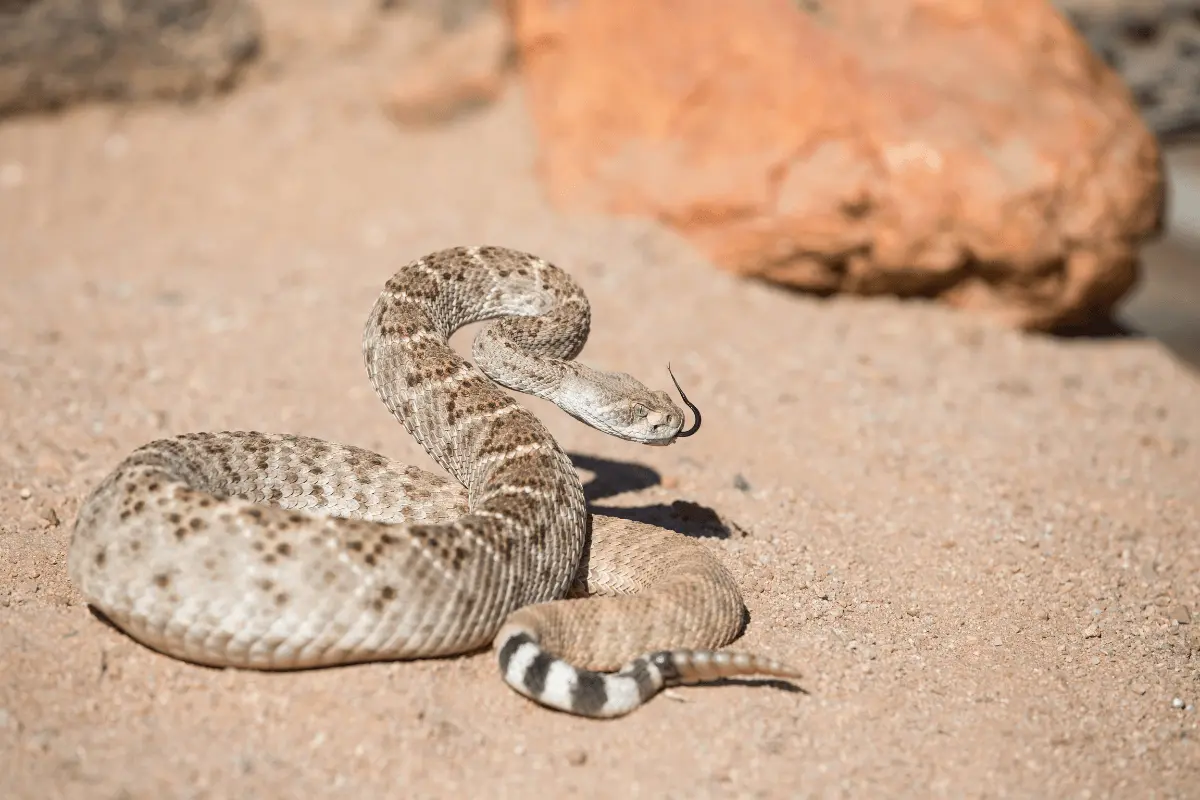
The western rattlesnake, Crotalus atrox, is also called the rattler or diamondback. They have heads shaped like triangles, big teeth, and rattles at the end of their tails. Their bodies are light brown, and their tails are white and black with diamond-shaped spots. Mice, rats, rabbits, and squirrels make up most of a rattlesnake’s diet. When alternative options aren’t accessible, they’ll eat birds, lizards, and even smaller snakes.
One of the most dangerous snakes in North America is the western diamondback rattlesnake. They are pit vipers, and they can not only feel the heat but also bite you and kill you if you don’t treat it. They live in the southwestern United States, northern Mexico, and Central America.
Inland Taipan Snake
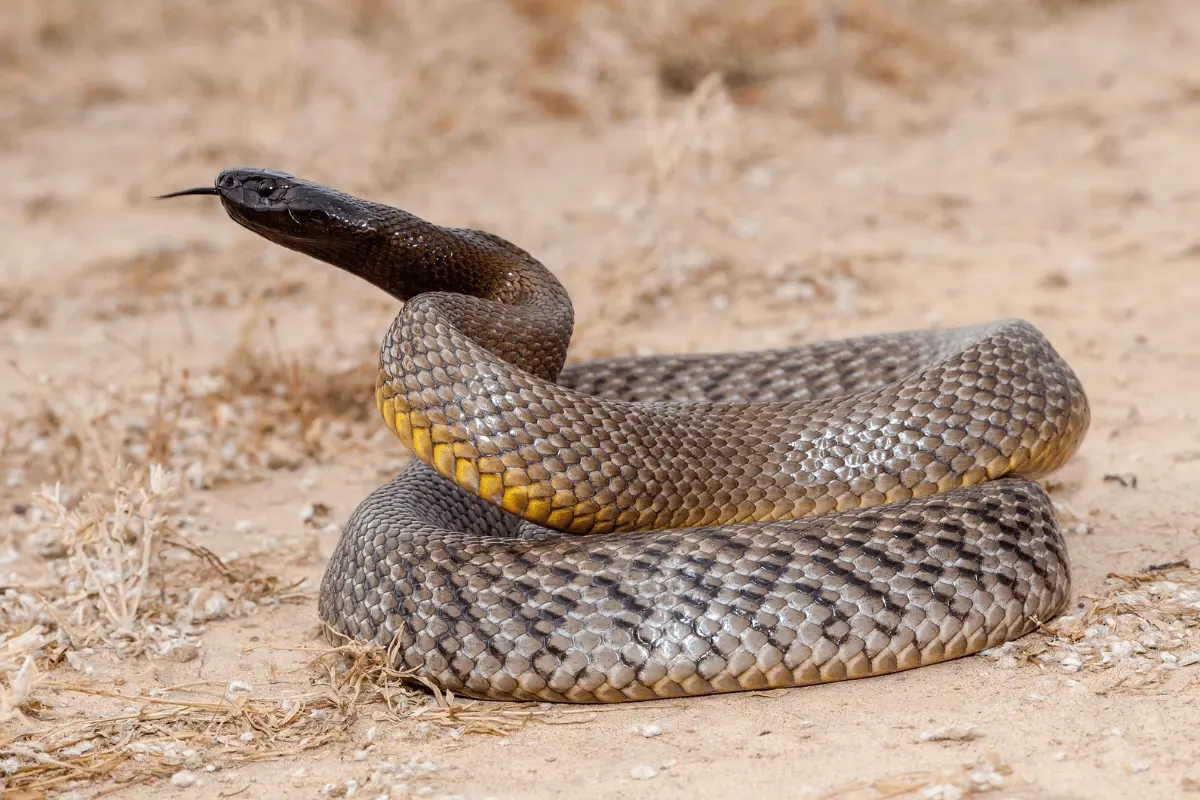
The most dangerous snake in the world is the inland Taipan. Even though the inland taipan is known to have a deadly bite, it would much rather hide or run away from people than bite them. They live in Australia’s central and eastern deserts.
Depending on the time of year, inland taipans can be sand-colored or dark brown. They can get as long as almost six feet, making them one of our list’s biggest desert snakes. The inland taipan doesn’t eat birds, reptiles, or amphibians like some snakes in the desert. It only eats small to medium-sized mammals. The inland taipan hunts birds, marsupials, and small animals in the undergrowth.
Viper Snake
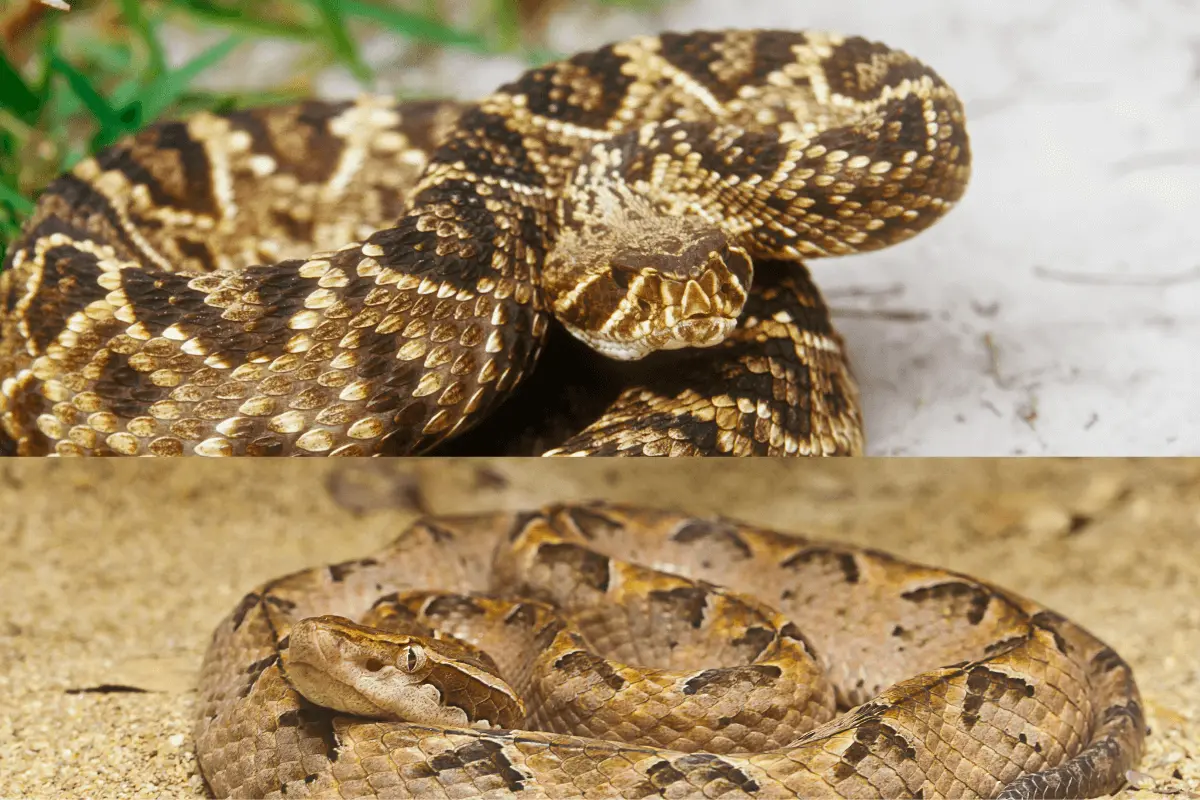
Pit vipers and Old World vipers are more than 200 species of venomous snakes that comprise the family Viperidae, which is sometimes split into two separate families. They hunt by hitting their prey and poisoning it. Usually, small mammals like mice, voles, and shrews make up most of the common viper’s food; however, it also includes birds, amphibians like frogs and newts, insects, and spiders.
Vipers have two long, hollow fangs that can inject venom. They are attached to upper jaw bones that can move and fold back into the mouth when not used. Their scales are keeled, and the pupils in their eyes are straight.
Sidewinder Snake
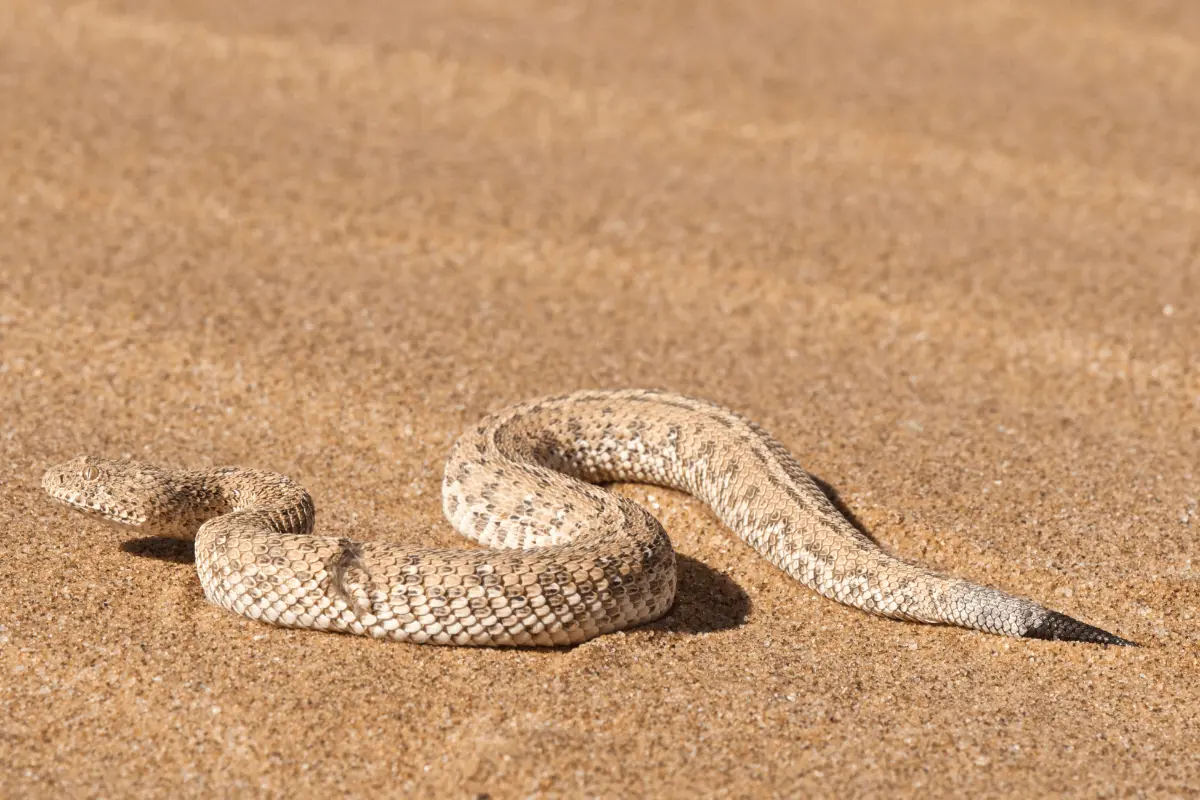
A sidewinder, also called a horned viper, is one of four small poisonous snakes that live in the deserts of North America, Africa, and the Middle East. They all move in a way that looks like they are sidewinding.
A sidewinder is a snake that has rattles. This pit viper has small horns above each eye that can be used to keep sand from covering the eyes when the snake is buried. Sidewinders prefer kangaroo rats to other small animals in the deserts where they are found. Smaller snakes, lizards, and bird eggs are among their favorite foods.
Saw-Scalped Viper Snake
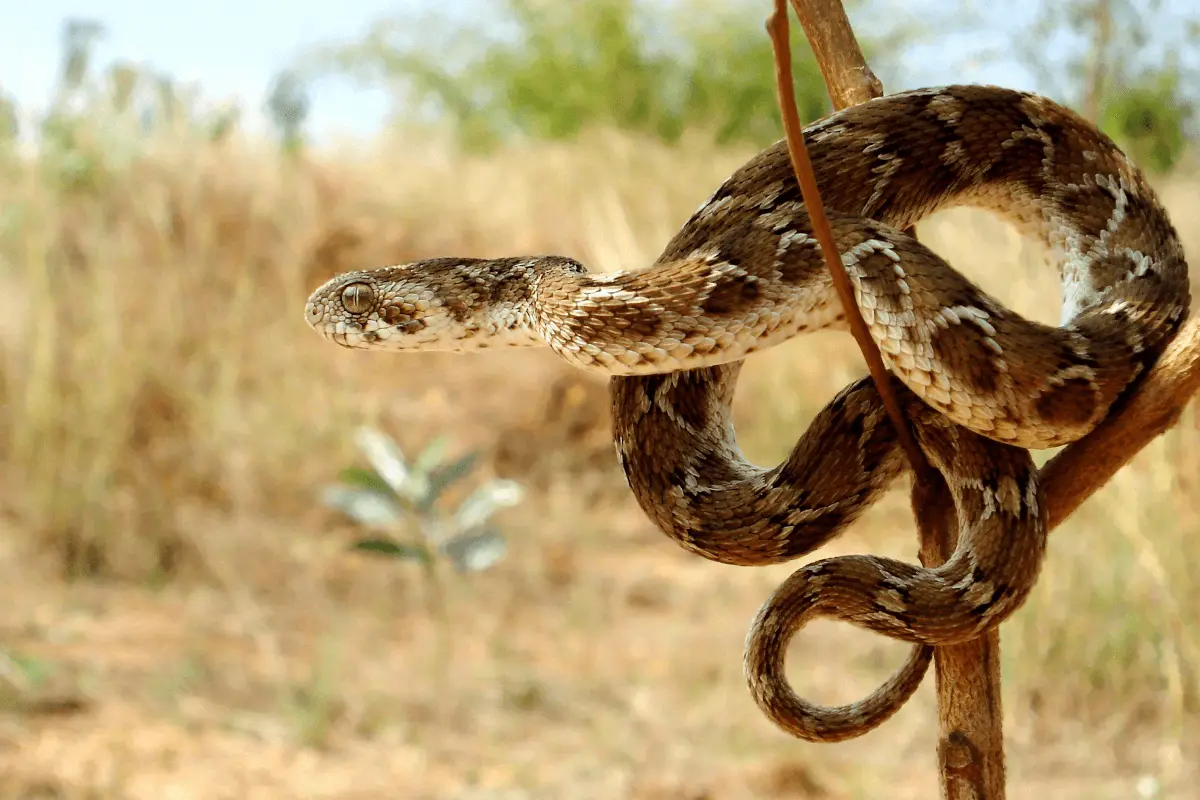
A saw-scaled viper is a name for any of eight species of small, poisonous snakes that live north of the Equator in dry savannas and deserts from Africa and Arabia to India and Sri Lanka. The saw-scaled viper preys on lizards and small rodents, and it has even been known to eat the eggs of birds that nest on the ground.
They have a thick body with a pear-shaped head separated from the neck. Their pupils are vertically elliptical, and their scales are rough and heavily keeled. They also have short, thin tails. All over the body are rows of sharp scales spaced at an angle. Adults are between 1-3 feet long.
Desert Kingsnake
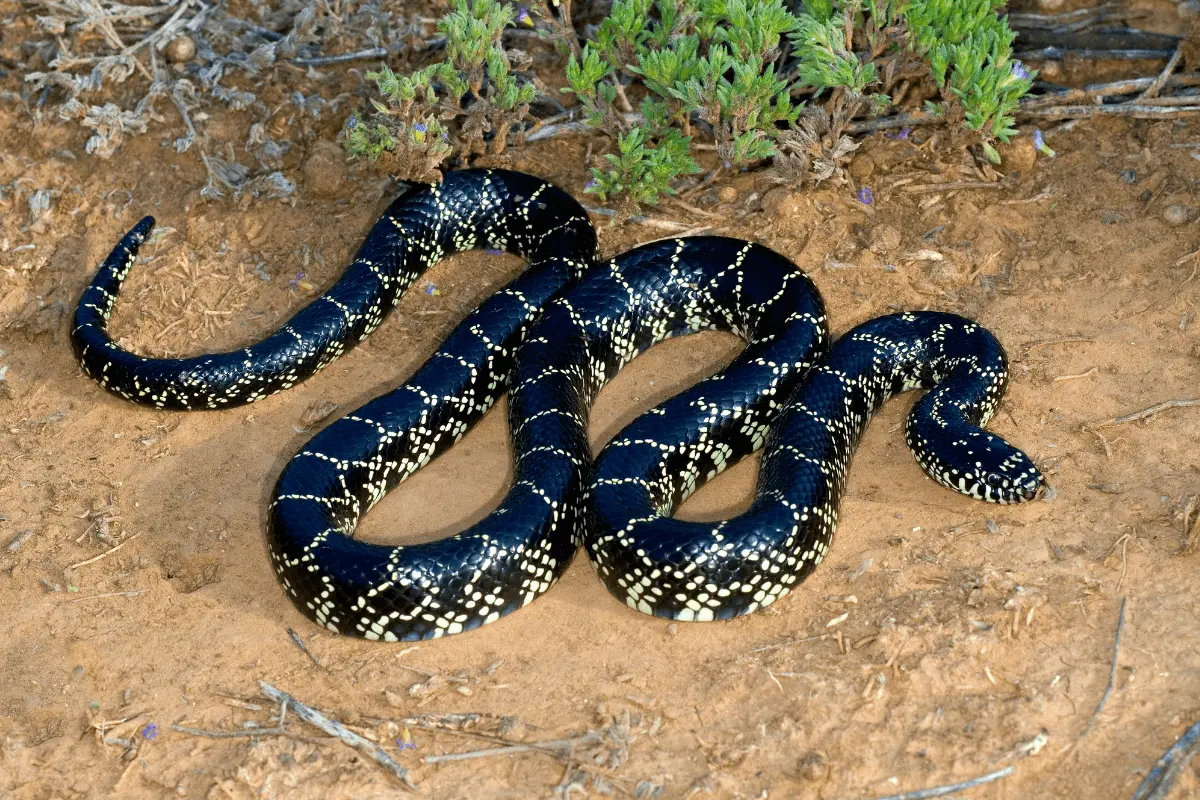
The desert kingsnake is a type of kingsnake that lives in New Mexico, Arizona, and Texas. It is yellow and black and has no poison. Desert kingsnakes are mostly carnivores, feeding primarily on small mammals like mice and rats. Still, they have also been reported to swallow birds, bird eggs, reptiles like lizards and snakes, and even amphibians.
They usually grow 3–4 feet long, but some have grown as long as 6.8 feet. When they see a person, they are calm animals. They may “play dead” by turning over and staying still if they don’t run. Ranchers and people who keep kingsnakes as pets do so in the hopes that the snakes will eat other snakes that are more dangerous.
Vipera Snake
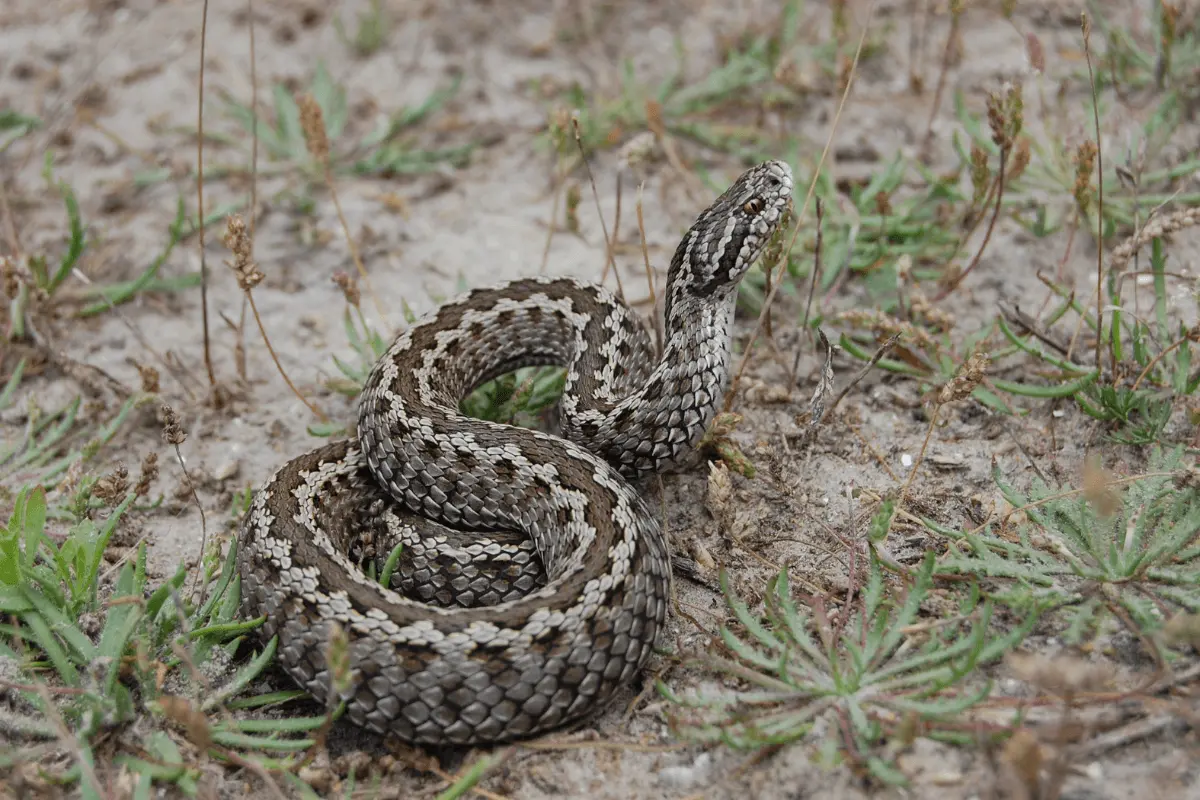
Vipera is a group of snakes that have poison. It extends from the United Kingdom to the Pacific region of Asia and from North Africa to the edge of the Arctic Circle. Rodents like mice and voles, birds, lizards, and frogs, make up most of their diet. They may occasionally eat insects, too.
The Latin word vpera is thought to come from the words vivus and pario, which mean “alive” and “bear” or “put forth,” respectively. This references the fact that most vipers give birth to live young. At the moment, 21 species are known.
Egyptian Cobra Snake
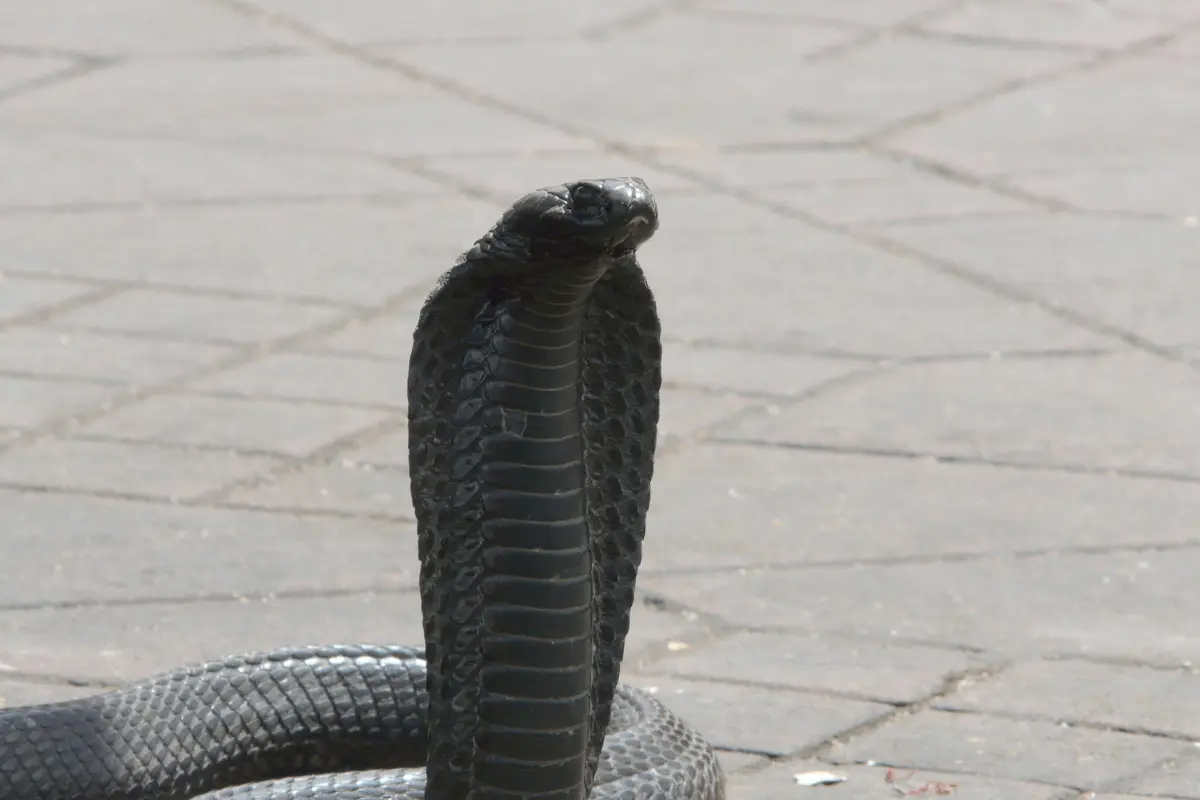
Egyptian cobras are huge snakes. The head is big and flat, and there isn’t much difference between it and the body. Like the necks of all other cobra species, the neck of this cobra has long cervical ribs that can grow to form a hood. The snout of an Egyptian cobra is long and rounded. The eye is extensive, and the pupil is round.
The body of the Egyptian cobra is round and thick, with a long tail. The main factors affecting how long an Egyptian cobra is are its subspecies, where it lives, and how many of them there are.
The head and hood of this species are what make it stand out. They are mostly carnivorous, feeding primarily on rodents like mice and rats. Other animals on their menu include birds, amphibians like frogs and toads, reptiles like lizards and smaller snakes, and even fish.
Do Desert Snakes Eat Plants?
Snakes are all obligate carnivores, which means they can only eat meat. Snakes have short digestive tracts and can’t break down plant matter or get nutrients from it.
Some reptiles, like tortoises and iguanas, do like to eat plant-based meals. But when it comes to desert snakes, they only care about one thing getting some animal food for themselves. Most snakes kept as pets need to eat whole rats or mice, either alive or frozen.
How Often Do Snakes Eat In The Desert?
Like snakes in other environments, desert snakes don’t have to eat as often as we do. Their slow metabolism lets these scaly mates go days or weeks without eating.
Now, smaller snakes might eat once every few days or so. On the other hand, adult snakes like rattlesnakes and pythons could go weeks or even months without eating, especially if they caught a big meal before.
Of course, things like the weather and food availability also play a role. If there aren’t many things to eat, a desert snake might have to be a little more patient to find its next meal.
Conclusion
In conclusion, the mysterious life of desert snakes offers a fascinating tale of survival and change. These hardy animals, which range from rodents to birds and even other reptiles, have adapted their diets to the dry climate. They remain at the top of the food chain thanks to their stealth, patience, and refined hunting skills.
As we leave the sunbaked dunes, let’s take a moment to marvel at the desert’s remarkable biodiversity and the crucial role snakes play in keeping the ecosystem in check. And keep this information in mind the next time you come across a writhing serpent in the sand—you now know the desert dining secrets of these reptiles!
FAQs
References
Phadnis A, Manning KC, Schuett GW, Rykaczewski K. Role of Scale Wettability on Rain-Harvesting Behavior in a Desert-Dwelling Rattlesnake. ACS Omega. 2019 Dec 3;4(25):21141-21147. doi: 10.1021/acsomega.9b02557. PMID: 31867507; PMCID: PMC6921647.
Weidler JM, Lutterschmidt WI. Nature or Nurture: Can Prey-Based Diets Influence Species-Specific Physiological Performance Traits of Epidermal Lipid Content and Cutaneous Water Loss? Integr Org Biol. 2021 Feb 2;3(1):obaa043. doi: 10.1093/iob/obaa043. PMID: 33791586; PMCID: PMC7905159.
